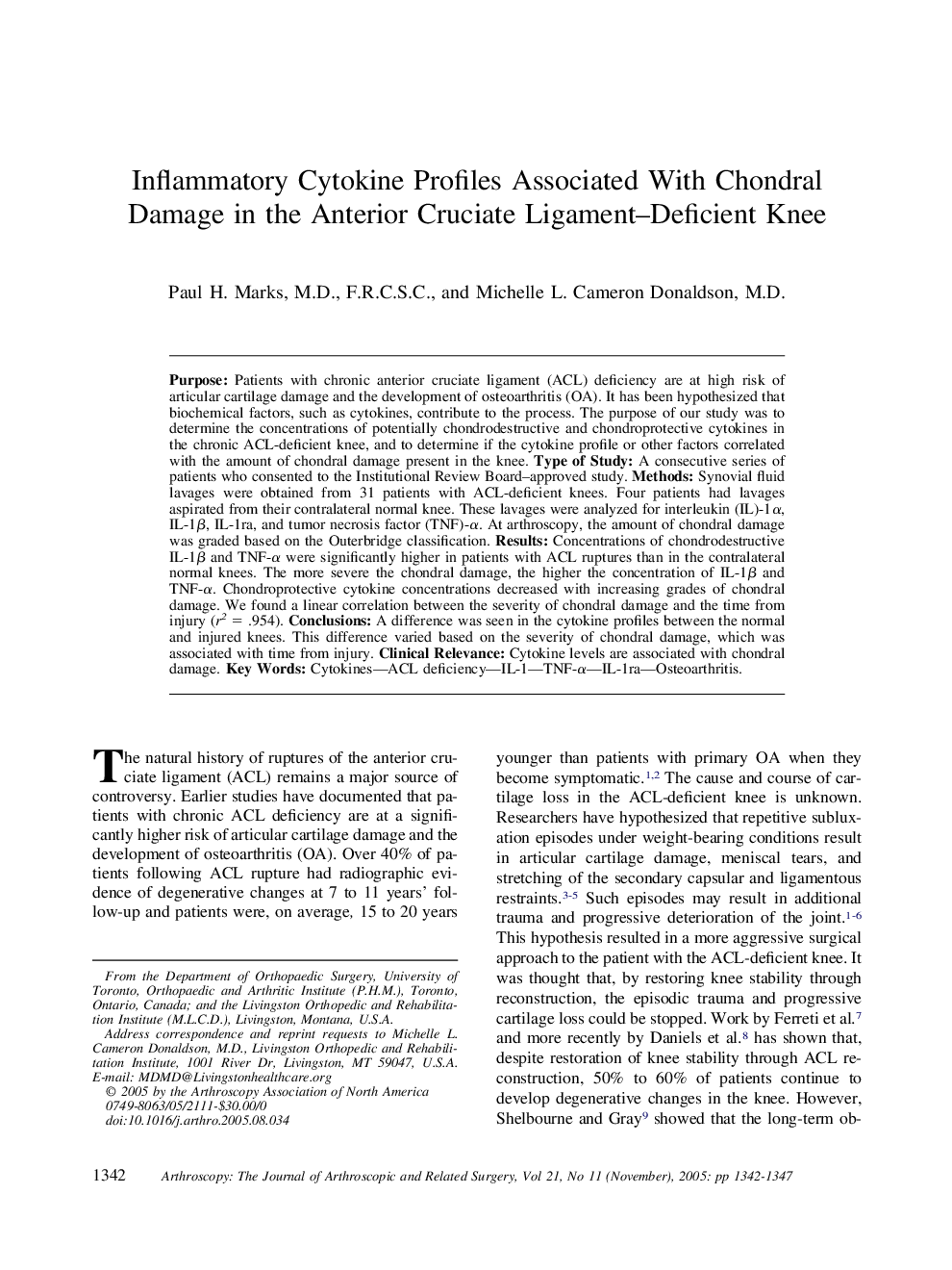| Article ID | Journal | Published Year | Pages | File Type |
|---|---|---|---|---|
| 10078775 | Arthroscopy: The Journal of Arthroscopic & Related Surgery | 2005 | 6 Pages |
Abstract
Purpose: Patients with chronic anterior cruciate ligament (ACL) deficiency are at high risk of articular cartilage damage and the development of osteoarthritis (OA). It has been hypothesized that biochemical factors, such as cytokines, contribute to the process. The purpose of our study was to determine the concentrations of potentially chondrodestructive and chondroprotective cytokines in the chronic ACL-deficient knee, and to determine if the cytokine profile or other factors correlated with the amount of chondral damage present in the knee. Type of Study: A consecutive series of patients who consented to the Institutional Review Board-approved study. Methods: Synovial fluid lavages were obtained from 31 patients with ACL-deficient knees. Four patients had lavages aspirated from their contralateral normal knee. These lavages were analyzed for interleukin (IL)-1α, IL-1β, IL-1ra, and tumor necrosis factor (TNF)-α. At arthroscopy, the amount of chondral damage was graded based on the Outerbridge classification. Results: Concentrations of chondrodestructive IL-1β and TNF-α were significantly higher in patients with ACL ruptures than in the contralateral normal knees. The more severe the chondral damage, the higher the concentration of IL-1β and TNF-α. Chondroprotective cytokine concentrations decreased with increasing grades of chondral damage. We found a linear correlation between the severity of chondral damage and the time from injury (r2 = .954). Conclusions: A difference was seen in the cytokine profiles between the normal and injured knees. This difference varied based on the severity of chondral damage, which was associated with time from injury. Clinical Relevance: Cytokine levels are associated with chondral damage.
Related Topics
Health Sciences
Medicine and Dentistry
Orthopedics, Sports Medicine and Rehabilitation
Authors
Paul H. (F.R.C.S.C.), Michelle L. Cameron M.D.,
